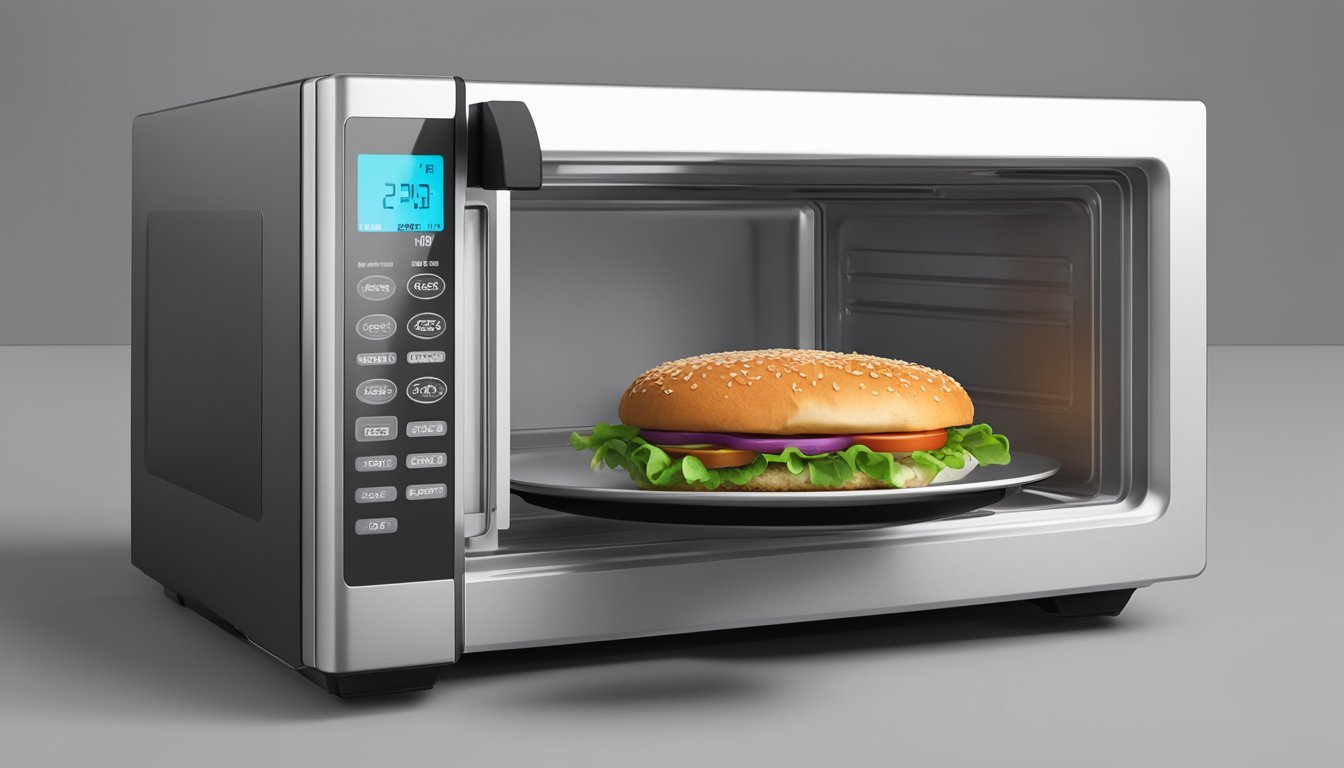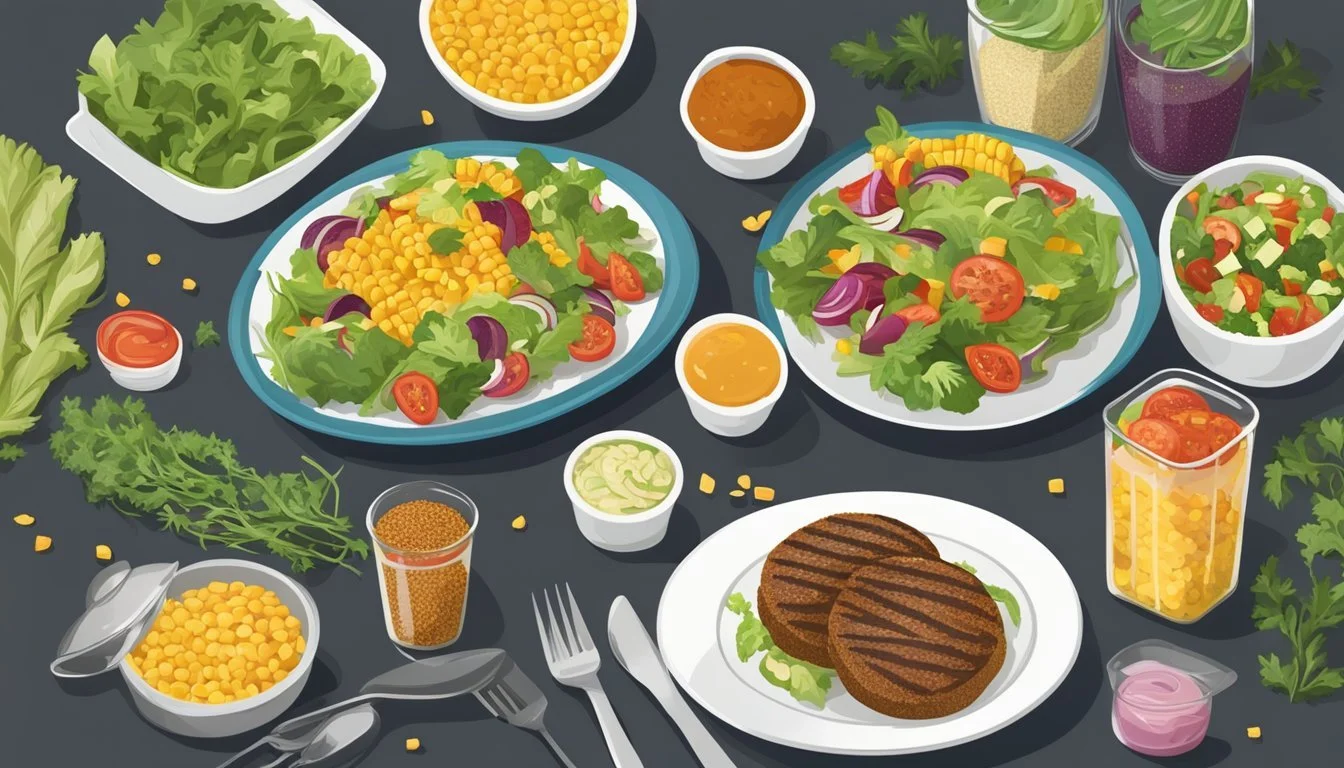How to Reheat Gluten-Free Plant-Based Burgers
Expert Tips for Optimal Flavor
Reheating gluten-free, plant-based burgers can be simple and quick, ensuring a delightful meal every time. To achieve the best results, use an oven set to 350 degrees Fahrenheit. Place the burger on a baking sheet, optionally adding a small amount of water or vegetable broth to prevent it from drying out. Bake for about 10-12 minutes, or until it reaches an internal temperature of 165°F.
Alternatively, using a stovetop method can provide a crisp exterior. Heat a small amount of oil in a pan over medium heat. Place the patty in the pan, cooking for 3-4 minutes per side until heated through. This method is particularly effective for those who prefer a bit of a seared finish on their burgers.
If you value convenience, a microwave can also be used, although it may not maintain the burger's texture as well as other methods. Place the patty on a microwave-safe plate and cover it with a microwave-safe lid or another plate. Heat on medium power in 30-second intervals until the desired warmth is achieved. This approach is ideal for a quick, hassle-free reheating option.
Understanding Gluten-Free Plant-Based Burgers
Gluten-free plant-based burgers cater to those avoiding gluten while adhering to a vegan diet. These veggie burgers are usually crafted using a variety of ingredients that ensure both nutrition and taste.
Ingredients often include beans like black beans, chickpeas, or lentils. These are rich in protein, fiber, and iron, essential for maintaining a balanced diet.
Vegetables are another cornerstone. Common choices are carrots, sweet potatoes, and beets. These provide essential vitamins and minerals such as vitamin C, iron, and calcium.
Grains like brown rice and oats, particularly gluten-free rolled oats or oat flour, add texture and help bind the burgers.
Nuts and seeds, such as walnuts and sunflower seeds, are frequently included to add healthy fats and additional protein.
The recipes might vary, but most aim for a good mix of nutrition and taste:
Protein: Beans, nuts, and seeds boost protein content.
Fiber: Vegetables and grains ensure high fiber.
Iron and Calcium: Essential minerals are naturally present in the ingredients used.
Here's a typical list of ingredients for a gluten-free vegan burger:
Beans (black beans, chickpeas, etc.)
Vegetables (carrots, sweet potatoes, beets, etc.)
Grains (brown rice, gluten-free oats)
Nuts and seeds (walnuts, sunflower seeds)
In summary, gluten-free plant-based burgers rely on a carefully chosen mix of beans, vegetables, grains, and nuts to ensure both taste and nutrition, making them an excellent option for a healthy and filling meal.
Preparation of Gluten-Free Plant-Based Patties
Creating gluten-free plant-based patties involves a careful selection of ingredients and precise preparation methods. This ensures a tasty, healthy, and satisfying result that is suitable for everyone.
Mixing the Ingredients
To start, homemade veggie burger recipes typically call for a base of beans or legumes. Black beans, chickpeas, or lentils can be used. For a rich texture, mash the cooked beans in a food processor until they are well blended but still slightly chunky.
Add finely chopped vegetables such as onion, garlic, bell peppers, and mushrooms. These add moisture, flavor, and nutrients.
Add dried herbs and seasonings such as ground cumin, smoked paprika, black pepper, sea salt, and dried oregano. These enhance the flavor profile. For a binding agent, mix in a flax egg or chia egg (which are soy-free), made by combining ground flaxseed or chia seeds with water and letting it gel.
Forming the Patties
Once the mixture is prepared, it's time to form the patties. Using your hands, shape portions of the mixture into round balls, then flatten them into patty shapes. Aim for uniform thickness to ensure even cooking.
Each patty should be slightly firm and hold together well. If the mixture is too wet, add gluten-free oats or almond flour to absorb excess moisture.
Make sure the patties are not too thick, roughly 1/2 to 3/4 inch thick, as this helps them cook evenly without falling apart. Place the patties on a lined baking sheet or plate, and let them rest to firm up the shape further before cooking.
Cooking Options: Baking or Grilling
For baking, preheat the oven to 350°F (175°C) and line a baking sheet with parchment paper. Place the patties on the sheet and bake for about 20-25 minutes, flipping them halfway through. Baking results in a slightly crispy exterior and a soft interior.
For grilling, preheat the grill to medium heat. Lightly oil the grates to prevent sticking. Grill the patties for about 4-5 minutes on each side, or until they have good grill marks and are heated through.
Grilling adds a smoky flavor that complements the spices. Choose the method based on your texture and flavor preference, ensuring that patties reach a safe internal temperature before serving.
Proper Storage for Extended Freshness
To keep gluten-free plant-based burgers fresh for as long as possible, it's crucial to follow specific refrigeration and freezing guidelines.
Refrigeration Best Practices
After purchasing or preparing gluten-free plant-based burgers, immediate refrigeration is essential. Store unopened packages in the fridge at or below 40°F (4°C).
Once a package is opened, transfer any unused burgers to an airtight container to prevent exposure to air and moisture, which can lead to spoilage. Opened plant-based burgers should be consumed within three days to ensure optimal freshness and taste.
Label containers with the date of storage to track expiration accurately. Always place the burgers on the middle shelf of the refrigerator, where the temperature remains most stable.
Freezing and Thawing Techniques
Freezing is an excellent way to extend the shelf life of gluten-free plant-based burgers. For best results, freeze burgers in their original packaging if unopened. If the package is opened, wrap each burger individually in plastic wrap, then place them in a freezer-safe bag.
Label the bags with the freezing date. Store in the freezer at 0°F (-18°C) or lower. Frozen plant-based burgers can last up to nine months without compromising quality.
When ready to use, thaw burgers in the refrigerator for 24 hours. This gradual thawing process maintains texture and flavor. Avoid refreezing thawed burgers, as this can affect their quality and increase the risk of bacterial growth.
Reheating Gluten-Free Plant-Based Burgers
Reheating gluten-free plant-based burgers can be done in several ways to maintain their texture and flavor. Each method offers unique benefits, from achieving a crispy exterior to ensuring a tender, moist center.
Oven-Based Reheating Methods
Preheat the oven to 350°F (175°C). Place the gluten-free plant-based burger on a baking sheet lined with parchment paper or lightly greased with olive oil. For added moisture, sprinkle a small amount of water or vegetable broth on the sheet. Bake for 10-12 minutes, flipping halfway through, until the burger is heated through and has reached an internal temperature of 165°F (75°C). This method ensures even heat distribution, helping retain a crispy exterior and a tender interior without drying out.
Stovetop Reheating Techniques
Heat a non-stick pan over medium heat and add a small amount of olive oil or plant-based butter. Once the oil is hot, place the burger in the pan and sauté for about 3-4 minutes on each side. This technique is quick and efficient, allowing the burger to achieve a slightly crispy outer layer while keeping the inside moist and meaty. To check doneness, the burger should be warmed up all the way through and maintain an internal temperature of 165°F (75°C).
Using a Microwave for Convenience
Place the burger on a microwave-safe plate. To prevent drying out, cover it with a damp paper towel or a microwave cover. Heat on medium power for 1-2 minutes, checking frequently to avoid overheating. While this method is the quickest, it tends to make the burger less crispy compared to other methods. For best results, consider reheating in short bursts and flipping the burger halfway through to ensure even heating and maintain texture.
Grilling for Added Flavor
Preheat the grill to medium-high heat. Brush the grill grates with a little olive oil to prevent sticking. Place the burger on the grill and cook for about 2-3 minutes per side. Grilling adds a delicious smoky flavor and helps achieve a crispy outer layer with a tender inside. Be mindful of the grill's heat to avoid charring the burger while ensuring it reaches the safe temperature of 165°F (75°C). This method is perfect for those looking to enhance the meaty texture and flavor of their plant-based burger.
Enhancing Flavor of Reheated Burgers
To elevate the taste of reheated gluten-free and plant-based burgers, several key strategies include adding complementary toppings, creating moisture barriers, and using flavorful condiments and spices. These approaches ensure a delicious, juicy, and flavorful burger.
Topping Ideas for Enhanced Flavor
Thoughtful toppings can significantly boost the flavor profile of reheated burgers. Consider caramelized onions and avocado for their rich, creamy textures and deep flavors. Lettuce and tomato provide freshness, while pickles add a tangy crunch.
For a gourmet twist, crushed garlic and thinly sliced red onions can be added. Popular vegan toppings like vegan cheese and sautéed mushrooms also contribute to a delicious experience.
Experimenting with a variety of toppings allows personalization of each burger to suit different tastes, ensuring every bite is satisfying.
Creating a Moisture Barrier
Preventing dryness in reheated burgers is crucial. Brush olive oil or vegan butter on both sides of the burger patty before reheating. This not only retains moisture but also enhances flavor.
Using a slice of vegan cheese, placed atop the patty in the oven, can create a layer that helps lock in juices. Wrapping the patty in aluminum foil before placing it in the oven is another effective method.
Sprinkling a little salt and pepper before reheating also aids in maintaining a juicy texture, ensuring the patty stays flavorful.
Condiments and Spices for Extra Zest
Incorporating a variety of condiments and spices can transform a reheated burger. Vegan mayo mixed with sriracha adds a spicy, creamy kick. Ketchup and mustard are classic choices, while tamari can provide a touch of umami.
Garlic lovers might enjoy a spread infused with minced garlic. For a tangy twist, consider a vegan aioli or chipotle sauce.
A dash of common spices like paprika, cumin, or a sprinkle of fresh herbs further elevates the flavor. Combining these with condiments enhances the overall taste, making reheated burgers just as enjoyable as fresh ones.
Healthy Side Dishes and Pairings
Pairing gluten-free plant-based burgers with the right sides can enhance both flavor and nutritional value. Explore vegetable-based dishes, potato-based options, and tips for creating a balanced plate to complement your meal.
Vegetable Side Dishes
Vegetable sides add valuable nutrients, vitamins, and fiber to your meal. Grilled vegetables, such as bell peppers, zucchini, and asparagus, bring a delightful crunch and vibrant color to the plate.
Salads made with mixed greens, cherry tomatoes, cucumbers, and avocado provide freshness and healthy fats. Adding nuts, like almonds or walnuts, and seeds, such as sunflower or chia, boosts protein and texture.
Another fantastic option is a hearty Israeli couscous salad mixed with chickpeas, olives, and fresh herbs. These dishes are not only quick and easy but also delicious and healthy.
Potato-Based Sides
Potato-based sides offer delightful comfort while remaining gluten-free. Traditional french fries can be made healthier by baking instead of frying. Sweet potato fries are another excellent alternative, packed with vitamins A and C, and they can be seasoned with herbs and spices for extra flavor.
Mashed potatoes with olive oil or plant-based butter provide a creamy, rich texture without dairy. Mixing in some nutritional yeast can add a cheesy flavor while keeping it vegan.
An interesting variation could be roasted potato wedges sprinkled with rosemary and garlic. These not only satisfy cravings but also offer benefits such as higher fiber and lower fat compared to conventional fries.
Creating a Balanced Plate
Creating a balanced plate ensures a well-rounded, satisfying meal. Incorporate a variety of grains like quinoa or brown rice to provide essential amino acids and complex carbohydrates. Leafy greens and other vegetables offer necessary fiber and antioxidants.
Including healthy fats from sources like avocado or nuts enhances flavor and satiation. For those watching their caloric intake, steamed vegetables such as broccoli or spinach can be an excellent low-calorie side, maintaining nutrient density.
Finally, consider the nutritional value of each component. This approach not only ensures a delicious meal but also supports overall health and wellness. By thoughtfully pairing side dishes, any plant-based burger meal can become a nutritious and enjoyable dining experience.






